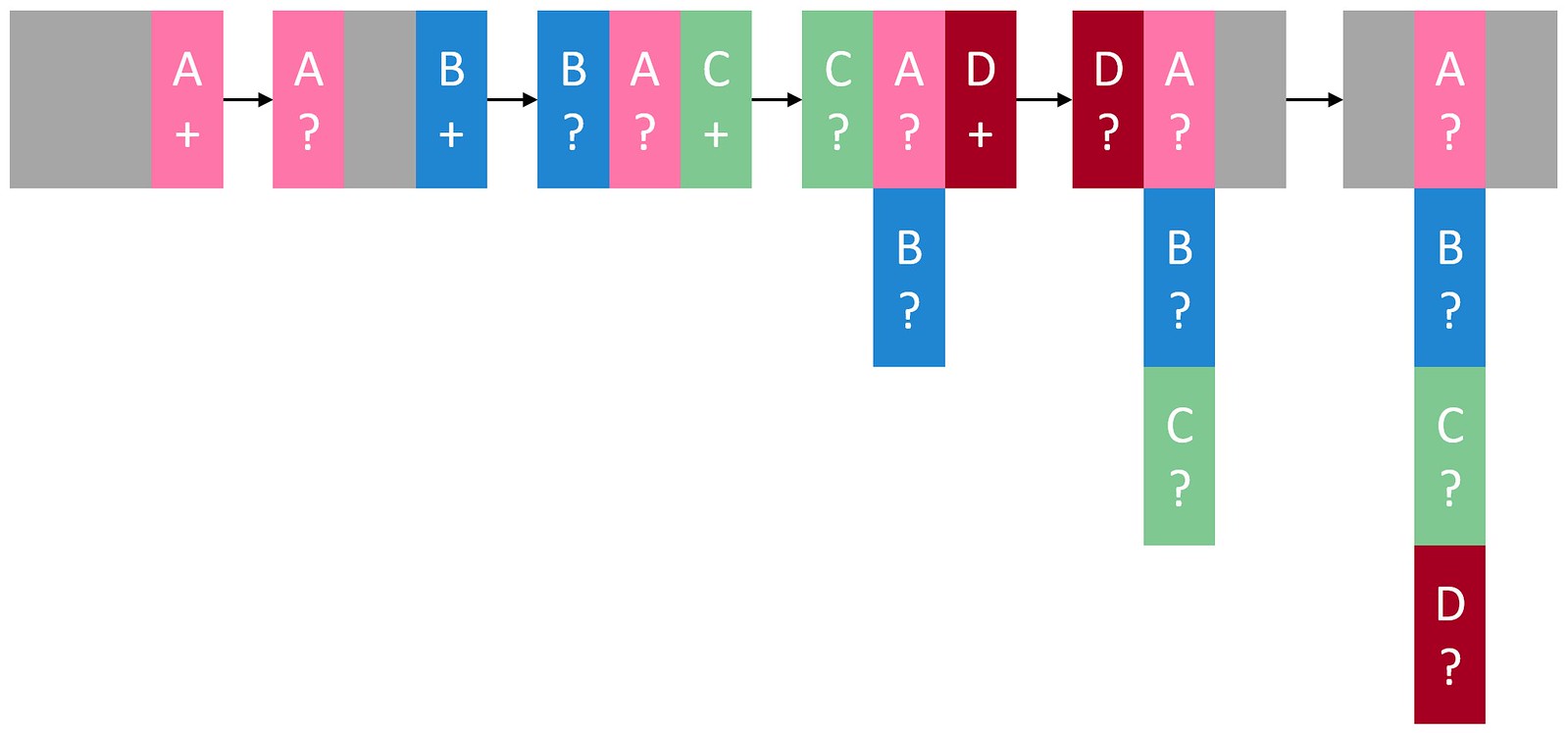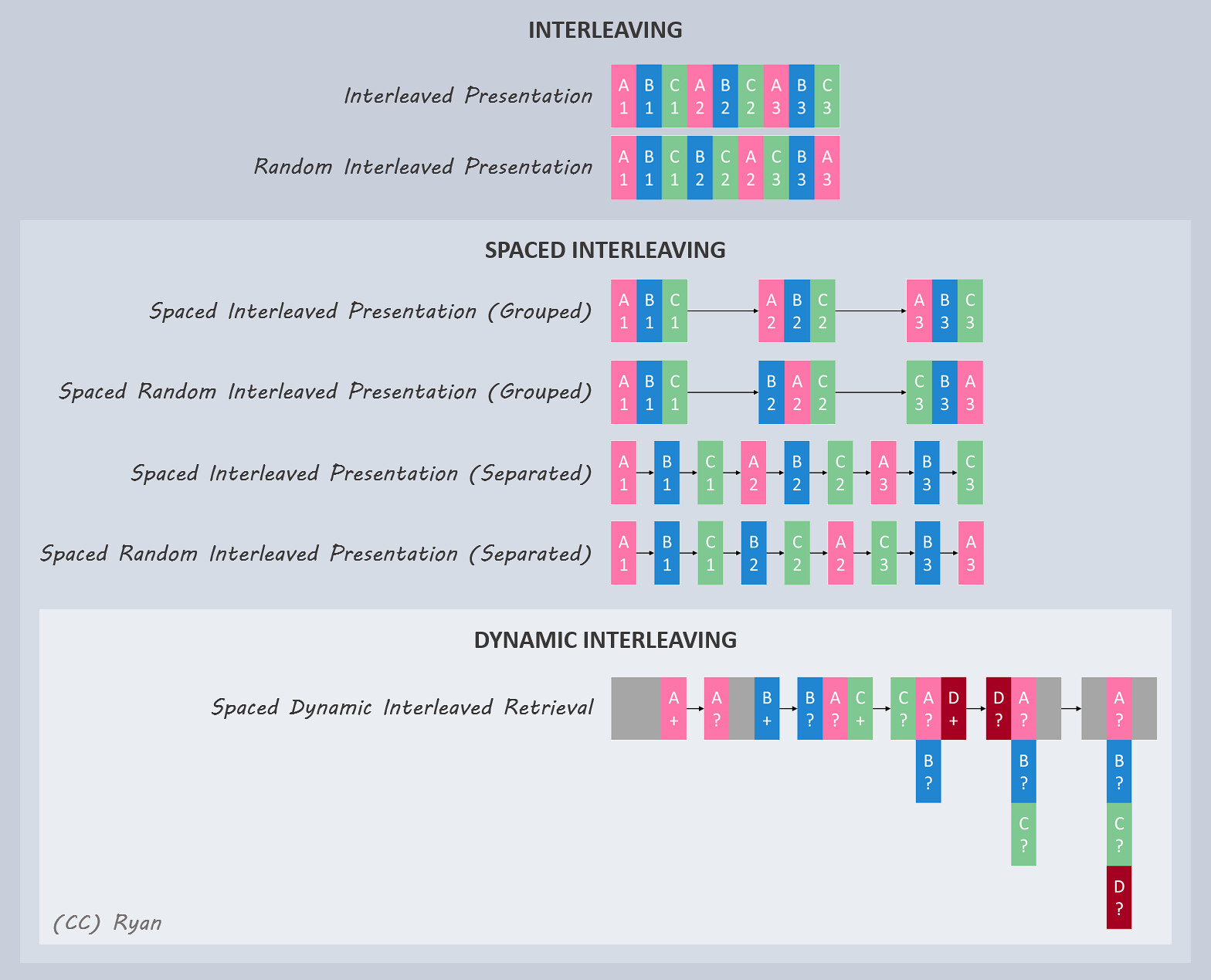There was an aspect I omitted from my previous post, Space invaders, in which I covered the spacing effect as a means of maximising long-term retention.
Zsolt Olah picked it: interleaving and – ironically! – I judged it a bridge too far to include in the same post and so decided to split it out across a second one.
You’ll see why…

Interleaving
Before defining interleaving, I feel it’s helpful to review the opposite: blocked presentation or blocking. This approach is equivalent to massed presentation whereby the content is consumed successively:
An alternative approach is to split each block into leaves and vary their presentation. This approach is known as interleaved presentation or varied presentation or mixed presentation:
The illustration above maintains the topical sequence, in contrast to random interleaved presentation whereby the sequence is shuffled:
Spaced interleaving
Just as the spacing effect can be employed to produce spaced block presentation:
…so too can it be employed to produce spaced interleaved presentation (grouped):
…or spaced random interleaved presentation (grouped):
I use the qualifier “grouped” because, while that’s the traditional way of illustrating interleaving – I suspect due to the formal paradigm of education by which you fill up the periods assigned to you – I see no reason why each leaf couldn’t be separated over time; hence spaced interleaved presentation (separated):
…and spaced random interleaved presentation (separated):
As you can see, it gets complicated real quick, and that’s before employing reinforcement or the testing effect!
Dynamic interleaving
When I look at the various permutations of spacing and interleaving, I wonder if an optimal timing or sequencing regime exists. Full disclosure: I’ve done zero research to find out; if you have, I’d love to play my lazy web card and ask you to share your findings via a comment below.
I also wonder about the efficacy of a bespoke regime that sequences the leaves according to a dynamic pattern – test latest > test previous > present new – leading to a final summative test:
I call this regime spaced dynamic interleaved retrieval (quite a mouthful!) or dynamic interleaving for short. Again, if you’re aware of anything out there that’s similar, please let me know.











Once again, Ryan, I leave your post with a smile.
I completed a graduate program at Colorado State University (Hig-Impact, On-Demand, Learning) during the Great Distancing. In this program, we were exposed to interleaving and how it’s a somewhat better technique for studying information taught in traditional as well as modern learning venues.
I also find myself using it in many other places of my life, adding value. I use it when I write and during self-learning projects for example. Working in the gig economy, I move back and forth in various tasks for different organizations and needs. It appears efficient in completing these tasks but, as an added benefit, it keeps me from burning out like when focusing on one project, cradle to grave.
Cheers,
Todd
Thanks for sharing, Todd!